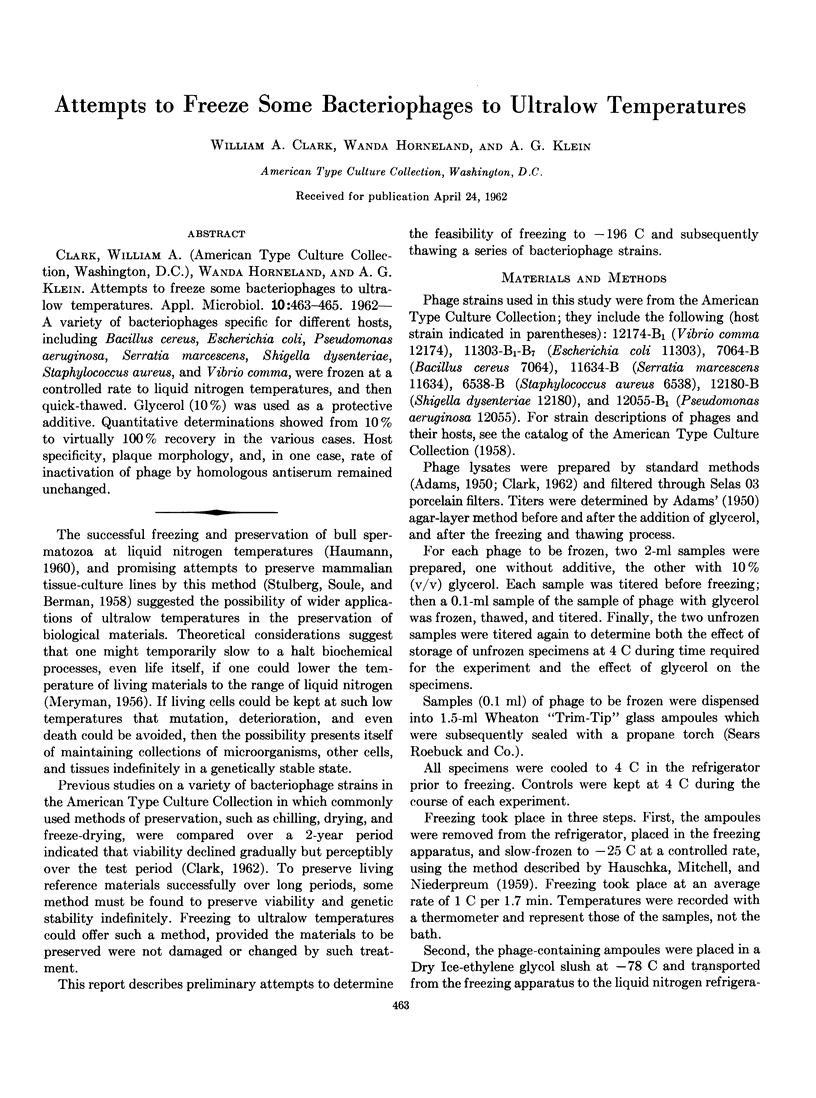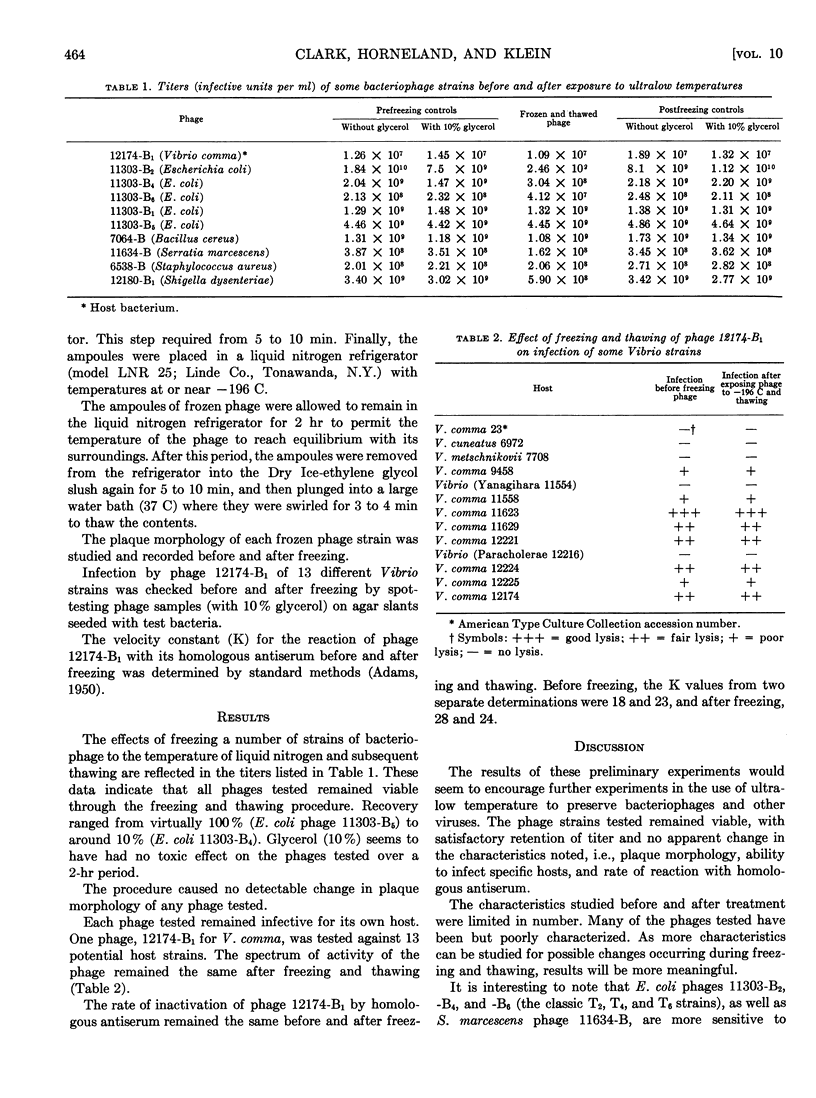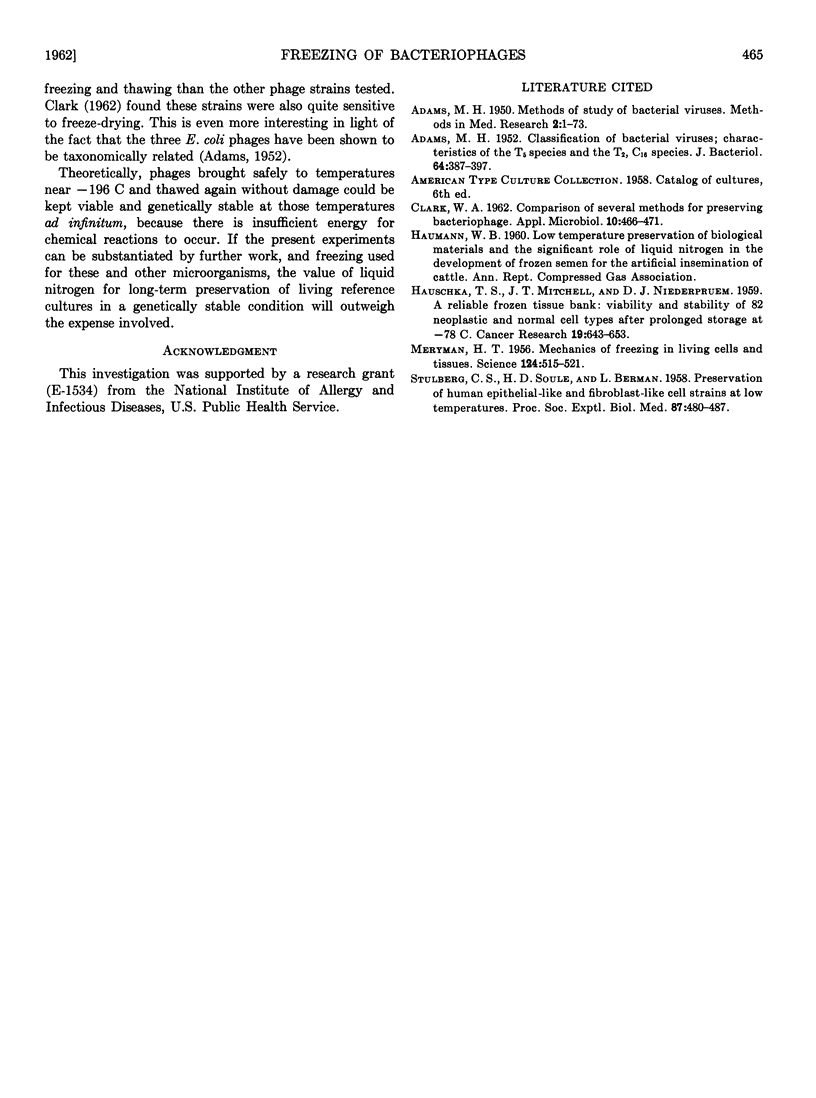Abstract
A variety of bacteriophages specific for different hosts, including Bacillus cereus, Escherichia coli, Pseudomonas aeruginosa, Serratia marcescens, Shigella dysenteriae, Staphylococcus aureus, and Vibrio comma, were frozen at a controlled rate to liquid nitrogen temperatures, and then quick-thawed. Glycerol (10%) was used as a protective additive. Quantitative determinations showed from 10% to virtually 100% recovery in the various cases. Host specificity, plaque morphology, and, in one case, rate of inactivation of phage by homologous antiserum remained unchanged.
Full text
PDF


Selected References
These references are in PubMed. This may not be the complete list of references from this article.
- ADAMS M. H. Classification of bacterial viruses: characteristics of the T5 species and of the T2, C16 species. J Bacteriol. 1952 Sep;64(3):387–396. doi: 10.1128/jb.64.3.387-396.1952. [DOI] [PMC free article] [PubMed] [Google Scholar]
- CLARK W. A. Comparison of several methods for preserving bacteriophages. Appl Microbiol. 1962 Sep;10:466–471. doi: 10.1128/am.10.5.466-471.1962. [DOI] [PMC free article] [PubMed] [Google Scholar]
- HAUSCHKA T. S., MITCHELL J. T., NIEDERPRUEM D. J. A reliable frozen tissue bank: viability and stability of 82 neoplastic and normal cell types after prolonged storage at -78 degrees C. Cancer Res. 1959 Jul;19(6 Pt 1):643–653. [PubMed] [Google Scholar]
- MERYMAN H. T. Mechanics of freezing in living cells and tissues. Science. 1956 Sep 21;124(3221):515–521. doi: 10.1126/science.124.3221.515. [DOI] [PubMed] [Google Scholar]


